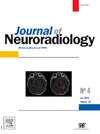Balloon angioplasty alone in carotid artery dissections: an overlooked therapeutic choice in acute ischemic stroke
IF 3.3
3区 医学
Q2 CLINICAL NEUROLOGY
引用次数: 0
Abstract
Background & purpose
Carotid dissection is a major cause of ischemic stroke in young patients and its endovascular management is complex and lacks consensus. Our aim was to carry out the first comparative evaluation of balloon angioplasty alone versus stenting in the endovascular treatment of acute carotid artery dissection presenting with acute stroke.
Materials and methods
From the national ETIS (Endovascular Treatment of Ischemic Stroke) registry, between January 2015 and 2023, we included patients with acute ischemic stroke secondary to internal carotid artery dissection who underwent endovascular treatment. We compared clinical and imaging outcomes at a 3-month follow-up between two endovascular approaches for managing carotid artery dissection: balloon angioplasty alone versus stenting.
Results
Among the 160 patients included, 26 underwent balloon angioplasty alone, and 134 received carotid stenting. At the 3-month follow-up, the distribution of modified Rankin Scale (mRS) scores did not differ significantly between groups (p = 0.73).
Additionally, at 24 h there were no significant differences observed between the two groups regarding intracranial haemorrhage (31 % angioplasty alone vs. 45 % stenting; p = 0.202), carotid artery patency immediately after endovascular procedure (38.5 % vs 36 %, p = 0.826) or at 24 h (50 % vs. 51 %; p = 0.9), NIHSS scores (11 ± 8 vs. 11 ± 9; p = 0.972) or emboli in new-territory (11.5 % vs. 9 %; p = 0.713).
Conclusion
Although infrequently performed, balloon angioplasty alone showed comparable safety and efficacy to stenting and may represent a valid option in selected cases. Nonetheless, the observational design and small sample size warrant caution, and further studies are needed to confirm these findings.

颈动脉夹层单独球囊血管成形术:急性缺血性脑卒中中被忽视的治疗选择。
背景与目的:颈动脉夹层是年轻缺血性脑卒中的主要原因,其血管内处理复杂且缺乏共识。我们的目的是首次比较评价单纯球囊血管成形术与支架置入在急性脑卒中急性颈动脉夹层血管内治疗中的作用。材料和方法:从2015年1月至2023年1月的国家缺血性卒中血管内治疗登记中,我们纳入了接受血管内治疗的颈内动脉夹层继发性急性缺血性卒中患者。在3个月的随访中,我们比较了两种血管内入路治疗颈动脉夹层的临床和影像学结果:单独球囊血管成形术与支架植入术。结果:160例患者中,26例单独行球囊血管成形术,134例行颈动脉支架植入术。随访3个月时,改良Rankin量表(mRS)评分在各组间的分布无显著差异(p = 0.73)。此外,在24小时内,两组在颅内出血方面没有显著差异(单独血管成形术31% vs支架植入术45%;P = 0.202)、血管内手术后颈动脉立即通畅(38.5% vs 36%, P = 0.826)或24小时后通畅(50% vs 51%;p = 0.9),NIHSS评分(11±8∶11±9;P = 0.972)或新领地栓子(11.5% vs. 9%; = 0.713页)。结论:虽然很少进行球囊血管成形术,但单独球囊血管成形术的安全性和有效性与支架置入术相当,在某些病例中可能是一种有效的选择。然而,观察设计和小样本量值得谨慎,需要进一步的研究来证实这些发现。
本文章由计算机程序翻译,如有差异,请以英文原文为准。
求助全文
约1分钟内获得全文
求助全文
来源期刊

Journal of Neuroradiology
医学-核医学
CiteScore
6.10
自引率
5.70%
发文量
142
审稿时长
6-12 weeks
期刊介绍:
The Journal of Neuroradiology is a peer-reviewed journal, publishing worldwide clinical and basic research in the field of diagnostic and Interventional neuroradiology, translational and molecular neuroimaging, and artificial intelligence in neuroradiology.
The Journal of Neuroradiology considers for publication articles, reviews, technical notes and letters to the editors (correspondence section), provided that the methodology and scientific content are of high quality, and that the results will have substantial clinical impact and/or physiological importance.
 求助内容:
求助内容: 应助结果提醒方式:
应助结果提醒方式:


